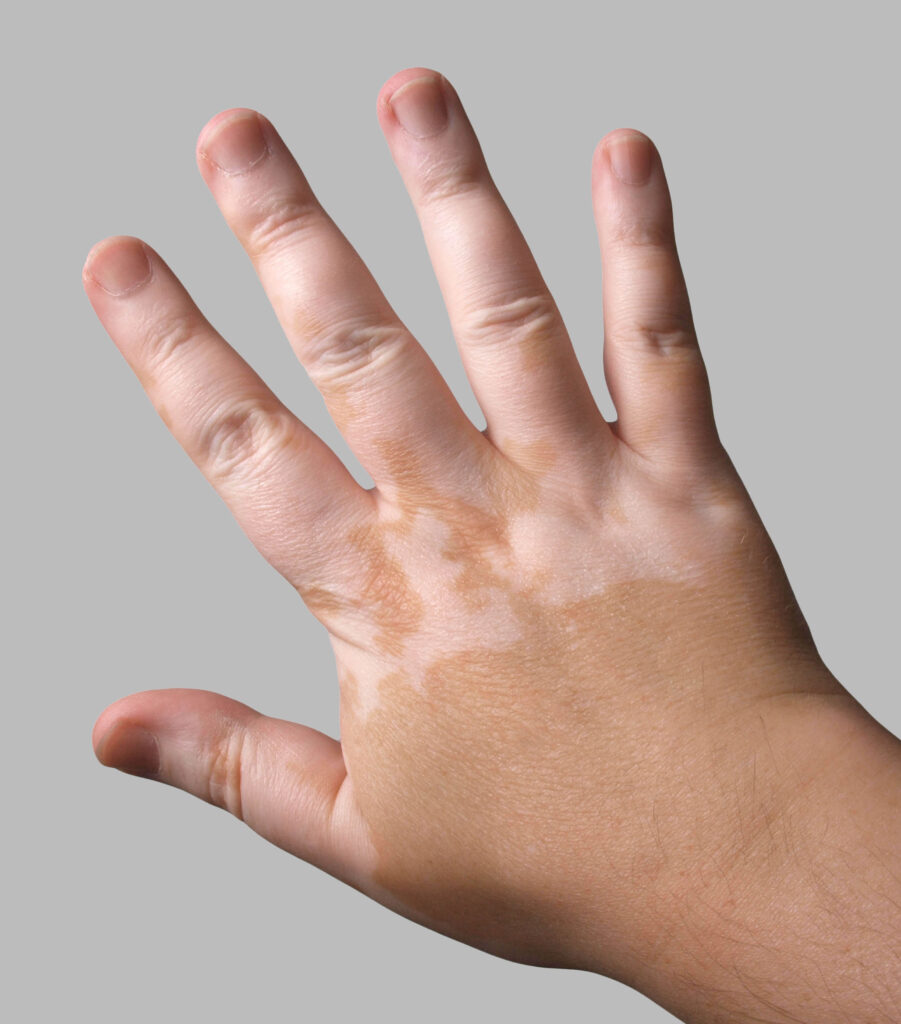Understanding Vitiligo

C5BJT9 Vitiligo
By Winfridah Muthee
Have you by any chance met someone with discolored areas in their skin and stared at them? Well, it goes without saying that the staring irritates them.
Vitiligo is a long-term skin condition in which growing patches of skin lose their colour.
The patches appear when melanocytes within the skin die off.
Melanocytes are the cell responsible for producing the skin pigment, melanin which gives skin its color and protects it from the sun’s UV rays.
It can affect people of any age, gender or ethnic group and globally it appears to affect between 0.5 and 2 percent of people.
Facts about Vitiligo:
.Vitiligo is not contagious
.It can affect people of any gender or ethnicity
.There is no cure and it is a lifelong condition
Treatment options may include exposure to UVA or UVB lights and depigmentation of the skin in severe cases.
Causes
The exact cause is unknown but it may be due to an autoimmune disorder or a virus.
The total area of skin that can be affected by vitiligo varies between individuals.
It can also affect the eyes, the inside of mouth and the hair.
In most cases the affected area remains discolored for the rest of the person’s life.
The condition is photosensitive. This means that the areas that are affected will be more sensitive to sunlight than those that are not.
The lighter patches tend to be visible in people with dark or tanned skin.
Remedies
A number of remedies that can help decrease the visibility of the condition include;
1. Using sunscreen because the lighter patches of skin are especially sensitive to sunlight and can burn easily.
2. Phototherapy with UVB light that is done in a hospital.
UVB phototherapy combined with other treatments can have a positive effect on vitiligo. However the result is not totally predictable and there is still no treatment that will fully re-pigment the skin.
3. There is also phototherapy with UVA light. The treatment is usually conducted in a health care setting
4. In case of mild vitiligo the patient can camouflage some of the white patches with colored cosmetic creams and use of make up with tones that match their skin features.
5. Depigmenting-when the affected area is widespread or covers 50 percent of the body or more, depigmentation can be an option. This reduces the skin color in unaffected parts to match the whiter areas. It is usually achieved by applying strong topical lotions such as monobenzone.
The treatment is permanent but can make the skin more fragile. Long exposure to the sun must be avoided.
Tattooing and vitiligo
Some people may consider tattooing. This is using surgery to implant pigment into the skin. It works best around the lips especially in people with darker skin.
There are two types of vitiligo; segmental and non-segmental.
Segmental vitiligo usually affect areas of skin attached to nerves arising in the dorsal roots of the spine.
Non-segmental vitiligo often appear on skin that is commonly exposed to the sun such as the face, neck and hands.
Low self esteem
Some people with vitiligo may have self-esteem problems and even anxiety.
Locally Ex Machachari actress Clara Wamaitha popularly known as Cindy ‘Mama Stella’, is among people who have openly talked about the plight they face with vitiligo.
Opening up in a recent YouTube interview, Cindy admitted that the condition pushed her to depression because she could not afford proper medical care and depended on her daughter for financial support when she was diagnosed.
Cindy has even pleaded to well-wishers to help her raise Sh150,000 for her medical expenses and upkeep.
It is necessary to talk to those with the condition and reassure them that they can live a whole productive life with the condition.





